.

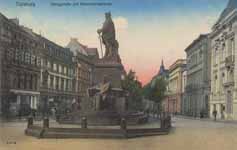
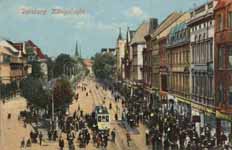
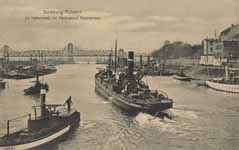
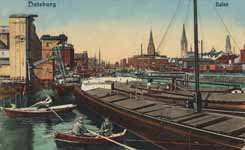
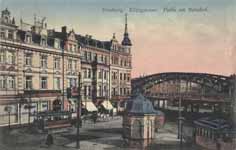
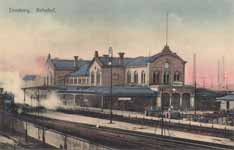
7,
Duisburg
Duisburg (German: [ˈdyːsbʊɐ̯k] ( listen)) is a German city in the western part of the Ruhr Area (Ruhrgebiet) in North Rhine-Westphalia. It is an independent metropolitan borough within Regierungsbezirk Düsseldorf. With the world's biggest inland harbour and its proximity to Düsseldorf International Airport, Duisburg has become an important venue for commerce and steel production.
Today's city is a result of numerous incorporations of surrounding towns and smaller cities. It is the fifteenth-largest city in Germany and the fifth-largest city in North Rhine-Westphalia with 495,668 residents as of 31 December 2007. The city is renowned for its steel industry. The last remaining coal mine closed down in the summer of 2009, but Duisburg has never been a coal-mining centre to the same extent as other places in the Ruhr. All blast furnaces in the Ruhr are now located in Duisburg. 49% of all hot metal and 34.4% of all pig-iron in Germany is produced here (as of 2000). It also has a large brewery, the König Brauerei, which makes the König Pilsener brand. The University of Duisburg-Essen, with 37,000 students, ranks among the 10 largest German universities.
Geography
Duisburg is located in the Lowland Rhine area at the confluence of the Rhine and Ruhr rivers and near the outskirts of the Bergisches Land. The city spreads along both sides of these rivers.
Adjacent cities
The following cities border Duisburg (clockwise starting from north-east): Oberhausen, Mülheim an der Ruhr, Ratingen, Düsseldorf, Meerbusch, Krefeld, Moers, Rheinberg, and Dinslaken.
Districts
Since 1 January 1975, Duisburg has been divided into seven districts or boroughs (Stadtbezirk) from the north to the south:[2]
Walsum (51,528)
Hamborn (71,528)
Meiderich/Beeck (73,881)
Homberg/Ruhrort/Baerl (41,153)
Duisburg-Mitte (centre) (105,961)
Rheinhausen (77,933)
Duisburg-Süd (73,321)
Neumühl (17,131)
Coat of arms of Duisburg at the town hall in Duisburg.
Climate
| Climate data for Duisburg | |||||||||||||
|---|---|---|---|---|---|---|---|---|---|---|---|---|---|
| Month | Jan | Feb | Mar | Apr | May | Jun | Jul | Aug | Sep | Oct | Nov | Dec | Year |
| Average high °C (°F) | 4 (39) |
5 (41) |
8 (46) |
12 (54) |
17 (63) |
20 (68) |
22 (72) |
22 (72) |
18 (64) |
14 (57) |
8 (46) |
5 (41) |
12.9 (55.3) |
| Daily mean °C (°F) | 2 (36) |
3 (37) |
5 (41) |
8 (46) |
13 (55) |
16 (61) |
17 (63) |
17 (63) |
14 (57) |
11 (52) |
6 (43) |
3 (37) |
9.6 (49.2) |
| Average low °C (°F) | 0 (32) |
0 (32) |
2 (36) |
5 (41) |
9 (48) |
12 (54) |
13 (55) |
13 (55) |
11 (52) |
8 (46) |
3 (37) |
1 (34) |
6.4 (43.6) |
| Precipitation mm (inches) | 81.3 (3.201) |
55.9 (2.201) |
76.2 (3) |
68.6 (2.701) |
73.7 (2.902) |
96.5 (3.799) |
88.9 (3.5) |
76.2 (3) |
73.7 (2.902) |
71.1 (2.799) |
83.8 (3.299) |
88.9 (3.5) |
934.8 (36.803) |
| Source: weather.com[3] | |||||||||||||
History
A legend recorded by Johannes Aventinus (fl. 1525) holds that Duisburg, (along with Deutz, Cologne, Duisdorf in Bonn, and Doesburg in Holland, all on the Rhine's right bank) was built by the eponymous Tuisto, mythical progenitor of Germans, ca. 2395 BC. There is nothing to establish any historical basis for such an early founding of Duisburg, which would make it among the earliest cities in Europe.
Roman period
Latest archaeological studies show that the present-day market-place was already in use in the first century. It has been the major central trading place of the city since the 5th century. The city itself was located at the "Hellweg", an important medieval trade route, and at a ford across the River Rhine. The Romans already guarded the ford.
420 The Franks usurp the Roman settlement and re-colonise the old part of the town.
883 The Normans conquer Duisburg and stay for the winter. First historic document mentioning Duisburg.
Duisburg Corputius plan 1566
Middle Ages
Due to the town's favourable geographic position a palatinate was built and the town was soon granted the royal charter of a free city. Duisburg became a member of the Hanseatic League. Around 1000 the river Rhine moved westward from the city. This put an end to the city's development as a trading town and it soon grew into a quiet rural city. The productions of cartographer Gerardus Mercator and the foundation of a university in 1655 established the city's renown as "Educated Duisburg" ("Duisburgum Doctum").
1120 construction of the city wall
1279 "city charter" granted by King Lothar III
1445 attack by the Cologne Archbishop was thwarted
1566 Johannes Corputius completes his city map of Duisburg.
1666 Duisburg within the Duchy of Cleves becomes a part of Brandenburg-Prussia
Industrial revolution
The rise of tobacco and textile industries in the 18th century made Duisburg an industrial center. Big industrial companies such as iron and steel producing firms (Thyssen and Krupp) influenced the development of the city within the Prussian Rhine Province. Large housing areas near production sites were being built as workers and their families moved in.
1823 a district ("Landkreis") Duisburg is established including the cities of Essen and Mülheim an der Ruhr.
1824 construction of the sulfuric acid factory Fr. W. Curtius[disambiguation needed ]. Beginning of the industry age in Duisburg.
1828 Franz Haniel builds a dockyard for steamships
1846 railway line to Düsseldorf
1847 railway line via Dortmund to Minden
1873 Duisburg becomes an independent city borough.
1904 Birth of the 100,000th resident (Ernst R. Straube)
1921 French Infantry occupy the city on 8 March to secure war reparation payments incurred during World War I.
1929 The city of Hamborn and Duisburg are joined together. The new city is given the name of Duisburg-Hamborn.
1935 Duisburg-Hamborn is re-named Duisburg.
1938 (November) The Nazis destroy the city's synagogue.
World War II
Main article: Bombing of Duisburg in World War II
A major logistical centre in the Ruhr and location of chemical, steel and iron industries, Duisburg was a primary target of Allied bombers. As such, it is considered by some historians to be the single most heavily bombed German city by the Allies during World War II, with industrial areas and residential blocks targeted by Allied incendiary bombs.
On the night of 12–13 June 1941, British bombers dropped a total of 445 tons of bombs in and around Duisburg. As part of the Battle of the Ruhr, another British raid of 577 bombers destroyed the old city between 12–13 May 1943 with 1,599 tons of bombs. During the bombing raids, 96,000 people were made homeless with countless lives lost.
In 1944 the city was again badly damaged as a total of 2,000 tons of bombs were dropped on 22 May. On 14 October, the tonnage was doubled to 2,018 tons when Halifax, Lancaster, and Mosquito bombers appeared over Duisburg as part of Operation Hurricane. This daylight raid was followed by a night attack; over 24 hours about 9,000 tons of HE and incendiaries had been dropped on Duisburg. Numerous similar attacks followed until the end of 1944.
The Allied ground advance into Germany reached Duisburg in April 1945. The US 17th Airborne Division, acting as regular infantry and not in a parachute role, met only scattered resistance in the vicinity and captured the city on 12 April 1945.[4]
On 8 May 1945 the ADSEC Engineer Group A, led by Col. Helmer Swenholt, commanding officer of the 332nd Engineer General Service Regiment, constructed a railway bridge between Duisburg and Rheinhausen across the Rhine River. This bridge was 860 meters long, and constructed in six days, fifteen hours and twenty minutes, a record time. This Bridge was named the "Victory Bridge".[5]
Post war period
A total of 299 bombing raids had almost completely destroyed the historic cityscape. 80% of all residential buildings had been destroyed or partly damaged. Almost the whole of the city had to be rebuilt, and most historic landmarks had been lost.
Duisburg celebrated its 1100th anniversary in 1983. On 19 July 2004 it was hit by a tornado. The municipal theatre and parts of the city center were damaged. The city hosted the 7th World Games in 2005. In 2010 21 people died because of a mass panic at the loveparade; over 500 people were injured.
Demographics
As of 2010, the city had a population of 489,600. Hence, Duisburg has seen a slight decrease in its population since 2006.
Population structure[6]
Ancestry Number Percentage
Germans 328,032 67%
Turks 83,232 17%
former Yugoslavians 18,116 (8,000 Serbs, 4,000 Bosnians, 3,000 Croats, 3,116 others.) 3,7%
Southern Europeans 13,219 (7,000 Italians, 4,000 Greeks, 2,219 others.) 2,7%
Eastern Europeans 10,282 (6,000 Poles, 1,800 Russians, 2,482 others.) 2,1%
Arabs 9,792 (2,500 Moroccans, 2,000 Lebanese, 2,000 Iraqis, 3,292 others.) 2%
East Asians 5,385 (2,000 Chinese, 1,000 Thai, 2,385 others.) 1,1%
South Asians 4,869 (1,000 Sri Lankans, 1,000 Indians, 2,869 others.) 1%
African/Afro-Germans 4,800 (1,500 Ghanaians, 1,000 Nigerians, 2,300 others.) 1%
others 11,750 2,4%
Turks in Duisburg
Duisburg is home to 85,000 people of Turkish origin.[7] Other estimates suggest that the Turkish population is so many as 100,000[8][9][10] The new Merkez Mosque, the largest Muslim place of worship in a non-Muslim country, was built with help by the way of contribution of 3.2 million euro from the EU and the state of North Rhine-Westphalia.[11]
Economy and infrastructure
Transport
Watershed of the Rhine River
Duisburg Port
"Duisport"[12] is the largest inland port in the world. It is officially regarded as a "seaport" because sea-going river vessels go to ports in Europe, Africa and the Middle East. Numerous docks are mostly located at the mouth of Ruhr river where it joins the Rhine.
Each year more than 40 million tonnes of various goods are handled with more than 20,000 ships calling at the port. The public harbor facilities stretch across an area of 7.4 km². There are 21 docks covering an area of 1.8 km² and 40 km of wharf. The area of the Logport Logistic Center Duisburg stretches across an area of 2.65 km². A number of companies run their own private docks and 70 million tonnes of goods yearly are handled in Duisburg on average.
Roads
Duisburg is served by several Autobahns, with 3 East-West routes and 2 North-South routes. A3 forms a bypass east of the city and mostly serves through traffic. A59 runs parallel to A3 and serves the city from North to South with 14 interchanges, much more than most other cities in the Ruhr area. The A40 and A42 are two East-West routes that serve central and Northern Duisburg. Autobahn A40 also serves major through traffic from the Netherlands to Berlin and points East. A short spur, A524 serves southern Duisburg. Most Autobahns have six lanes or are upgraded to six lanes (A59).
Apart from the Autobahns, no Bundesstraßen serve the city directly. B8 runs through the city, but uses A59's alignment. B288 runs in the extreme South of the city, and serves traffic to and from Krefeld. Several bridges span the Rhine river, most prominently the A40 and A42 bridges, but also the L287 suspension bridge and the L237 arch bridge, a three-lane bridge with 2 lanes per peak direction with dynamic lane usage.
Public transport
Duisburg main station is serviced by the InterCityExpress and InterCity long-distance network of the Deutsche Bahn, in addition line S 1 and S 2 of the S-Bahn line connect Duisburg with other cities of the Rhine-Ruhr area.
A Stadtbahn light rail and a bus system, both operated by the Duisburger Verkehrsgesellschaft provide local services. Stadtbahn line U79, the so-called D-Bahn, is a connection to the neighbouring city of Düsseldorf and is operated jointly with the Rheinbahn of Düsseldorf. All S-Bahn, Stadtbahn and bus lines operate under the umbrella of the Verkehrsverbund Rhein-Ruhr
Media
There are several newspapers reporting on local events and politics, including the "Westdeutsche Allgemeine" (WAZ), the "Neue Ruhr Zeitung" (NRZ) and the "Rheinische Post" (RP). The local radio station "Radio Duisburg" was the first local radio broadcaster in the German state of North Rhine Westphalia. It started broadcasting in 1990. There is a local TV station ("STUDIO 47"), which was the first local station to broadcast in North Rhine-Westphalia. It started broadcasting in 2006. In its Duisburg studios the WDR produces a local programme for the city of Duisburg and the lower rhine region north of Düsseldorf. WDR is part of the German TV and radio network ARD.
Culture
Duisburg hosts a comprehensive range of cultural facilities and events. A highlight is the annual "Duisburger Akzente" [1], a festival focusing on modern social, political and cultural topics.
Landschaftspark at night
Besides Düsseldorf Duisburg is a residence of the Deutsche Oper am Rhein, one of the major opera houses in Germany. The Duisburg Philharmonic Orchestra is one of Germany's orchestras with an international reputation.
Thanks to its history as a harbor city and a trade and industrial center Duisburg offers a variety of architectural places of interest, such as the German Inland Waterways Museum. The spectrum goes from old churches such as "St Johann Baptist" in Duisburg-Hamborn, which was built in 900, to modern age buildings like Micro-Electronic-Centrum in Duisburg-Neudorf, built in 1995. Another subject of interest is the Landschaftspark Duisburg-Nord[13] an abandoned industrial complex open to the public and an Anchor Point of ERIH, The European Route of Industrial Heritage. The city center locates the Wilhelm Lehmbruck Museum,[14] the municipal theatre [2] and the shopping street known as "fountain mile".
The city also contains two botanical gardens, the Botanischer Garten Duisburg-Hamborn and the Botanischer Garten Kaiserberg, as well as a number of municipal parks.
On 24 July 2010, 21 people were killed and hundreds injured in the city during the Love Parade, an electronic music procession and party.[15]
Sport
Club Sport League Venue
MSV Duisburg Football 2nd Bundesliga MSV Arena
EV Duisburg Ice hockey Regionalliga West (4th District League) Scania Arena
FCR 2001 Duisburg Women's football Bundesliga 1st German League PCC-Stadion
Duisburg Dockers Baseball, American football Landesliga II (2nd District League) Schwelgernstadion
Amateur SC Duisburg Water polo Deutsche Wasserball-Liga (1st Water Polo League) Schwimmstadion and club pool
Duisburg is involved in many kinds of sports. Nevertheless, most important for its inhabitants is the local football club MSV Duisburg. Recently, with the new MSV Arena the city received a brand new sports stadium for various kinds of sports such as football and American football. During the summer months of 2005 the World Games took place in Duisburg. During the 2006 FIFA World Cup, Duisburg was the stage for preparation of the Portuguese team and the residence of the Italian football team, who won the cup in the final match against France. Duisburg is also known for its Rhein-Ruhr-Marathon, its rowing and canoeing regattas and the world championships that take place there regularly. Other popular sports are icehockey, baseball, American football, water polo and hockey.
International relations
See also: List of twin towns and sister cities in Germany
Twin towns – Sister cities
Duisburg is twinned with:[16][17]
United Kingdom Portsmouth, Hampshire, United Kingdom (since 1950)[16][17][18][19][20]
France Calais, Nord, France (since 1964)[16][17]
Togo Lomé, Togo (since 1973)[16]
China Wuhan, Hubei, People's Republic of China (since 1982)[16]
Lithuania Vilnius, Lithuania (since 1985)[16][17]
Turkey Gaziantep, Turkey (since 2005)[16][17]
Russia Perm, Perm Krai, Russia[17]
Honduras San Pedro Sula, Honduras
United States Fort Lauderdale, Florida, United States
References
^ "Amtliche Bevölkerungszahlen" (in German). Landesbetrieb Information und Technik NRW. 31 December 2010.
^ "Population statistics". Statistisches Landesamt NRW. Archived from the original on 2008-02-09.
^ "Weather Information for Duisburg".
^ Stanton, Shelby, World War II Order of Battle: An Encyclopedic Reference to U.S. Army Ground Forces from Battalion through Division, 1939-1946 (Revised Edition, 2006), Stackpole Books, p. 97.
^ Jim & Tom Peacock. "duisberg". Geocities.com. Archived from the original on 2009-10-23. Retrieved 2009-05-05.
^ http://www.it.nrw.de/presse/pressemitteilungen/2008/pdf/59_08.pdf
^ http://50jahre.wir-sind-du.de/?page_id=24
^ http://www.tgrthaber.com/news_view.aspx?guid=631AD466-3816-439B-AB13-58C0A28DAA88
^ http://www.xtranews.de/2010/11/30/das-ist-volkesstimme-thilo-sarrazin-in-duisburg/
^ http://www.on5yirmi5.com/genc/haber.19761/turk-edebiyati-avrupada.html
^ Quantara.de retrieved July 25, 2008
^ Duisport[dead link]
^ "Duisburg-Nord Landscape Park". Landschaftspark.de. 2009-04-23. Retrieved 2009-05-05.
^ Cynapsis Kommunikationsagentur GmbH in Münster. "Cynapsis - Die Kommunikations-Agentur in Münster". Lehmbruck.cynapsis.com. Retrieved 2009-05-05.
^ Connolly, Kate (25 July 2010). "Love Parade stampede in Germany kills at least 18 - latimes.com". latimes.com. Retrieved 25 July 2010.
^ a b c d e f g "Cities Twinned with Duisburg". www.duisburg.de. Retrieved 2009-05-07.
^ a b c d e f "List of Twin Towns in the Ruhr District". © 2009 Twins2010.com. Retrieved 2009-10-28.
^ Portsmouth City Council. Twinning. Retrieved 22 August 2007.
^ Brian Daugherty. "Portsmouth Duisburg Anglo-German Friends". Portsmouth-duisburg.tripod.com. Retrieved 2011-04-07.
^ "Duisburger Portsmouthfreunde". Portsmouthfreunde.de. Retrieved 2011-04-07.
From Wikipedia, All text is available under the terms of the GNU Free Documentation License

